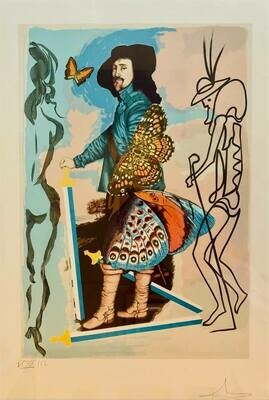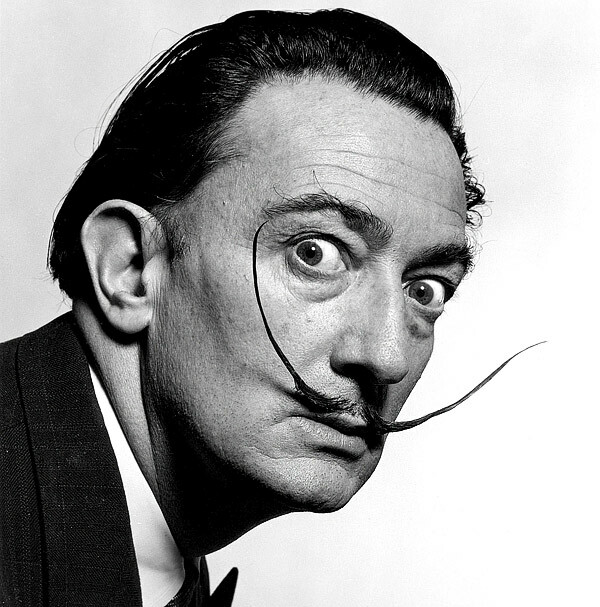00023

Artist: Salvador Dali
Title: Papillion Ancienes "Courtier (Five of Swords)"
Medium: Lithograph
Edition: 199/150 (signed by hand bottom right)
Year of Work: 1977
Dimensions: Unframed 29.5 x 20" Framed 36 x 27"
This suite of four lithograph series is based on some of the Renaissance's most famous paintings. The old master artists that he is paying tribute to include Van Dyck, Delacroix, Caravaggio, and Ingres. The scenes are stylized to look like tarot cards, and butterflies which are popular in much of Dali's work represent transformation. The four pieces are printed on Arches paper - Each is numbered in pencil at the lower left and signed in pencil at the lower right. This set is framed with a representative photo of the frames shown in one photo. The set price is $15,000 or they can be sold individually for $4,200
Courtier (Five of Swords): Depicts a male figure posing with a sword and tilted hat. This piece is modeled after Anthony Van Dyck's "Portrait of Charles I".
Renaissance (Six of Swords) - Displays nude females lounging behind the butterflies wings. This piece is modeled after Ingres' "Turkish Bath".
Courtesan (Eight of Swords) - Displays a single female figure with a castle-like structure behind her. This piece is based on Caravaggio's work "Penitent Magdalene".
Naissance (Six of Swords) Depicts two male figure in a boat with a village off into the distance. This piece is based on Delacroix's "The Barque of Dante" .
Salvador Dali – (1904-1989) Born in Figueras, Spanish surrealist painter and printmaker, Dali is best known for his explorations of subconscious imagery. From his melting clock to the burning giraffe, Dali rallied against the tradition of pre-meditated painting, preferring to draw upon his subconscious mind to bring imagery to life. Having left art school before taking his final exam, Dali estranged himself from his father. Dali felt his instructors were not qualified to exam him as an artist. He also knew that upon graduation he would no longer enjoy financial assistance from his father. He was a good student though, developing a vast number of artistic styles, showing great technical skills as a painter. In the 1920’s his discovery of the writings of Sigmund Freud on the significance of subconscious imagery led to his involvement in the Paris-based Surrealist movement, a group of artist and writers to sought to establish the “greater reality” of the human subconscious over reason. Dali began to induce hallucinatory states in himself by a process he described as “paranoiac critical.” Once the artist hit on that method, his painting style matured with extraordinary rapidity. From 1929 to 1937 he produced paintings which made him the world’s best-known surrealist artist. He depicted a dream world in which commonplace objects are juxtaposed, deformed or otherwise metamorphosed in a bizarre and irrational way. Dali portrayed these objects in a meticulously realistic detail, placing them within bleak, sunlit landscapes reminiscent of his Catalonian homeland. In the late 1930s Dalí switched to painting in a more-academic style under the influence of the Renaissance painter Raphael. Known for his ambivalent political views during the rise of fascism, he was alienated from his surrealist colleagues resulting in his expulsion from the group. Thereafter, he spent much of his time designing theater sets, interiors of fashionable shops, and jewelry. Feeling Europe during the war, he is noted for his flamboyant self-promotion stunts in the United States where he lived from 1940 to 1955. During this period and into the 70’s, Dalí painted many works with religious themes, though he continued to explore erotic subjects, to represent childhood memories, and to use themes centering on his wife, Gala. Notwithstanding their technical accomplishments, those later paintings are not as highly regarded as the artist’s earlier works.
